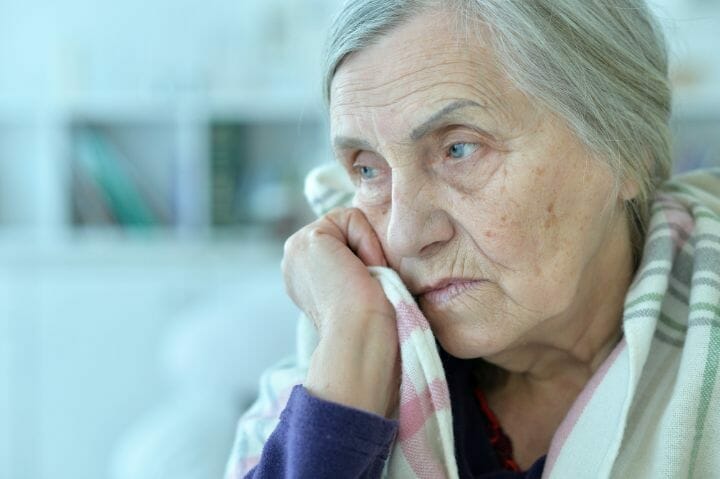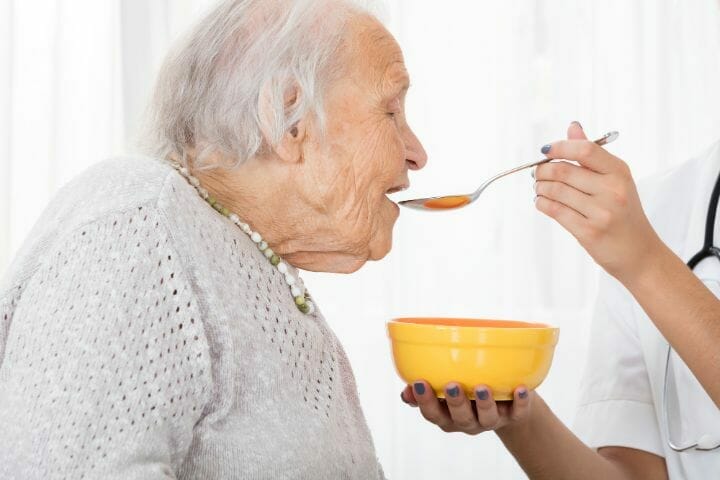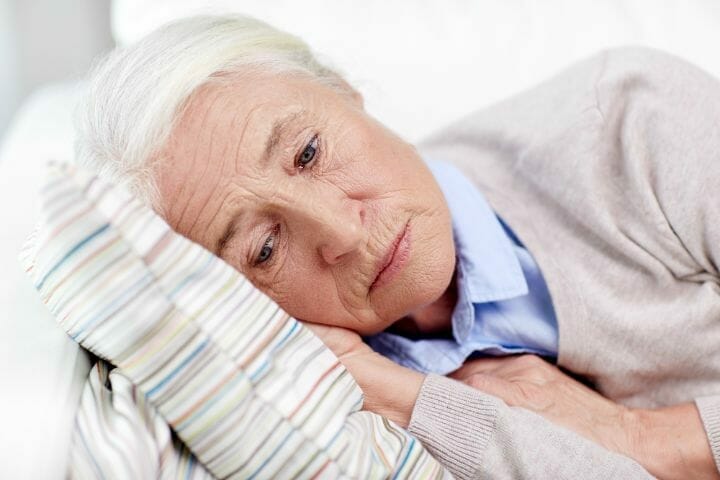As a caretaker to an , we understand that you worry about their advanced age-related issues, risk of fall, , lack of , , and .
Now, while you may already be concerned about their , you may not be prepared for the scenario where the elderly loved one stops food or . This does happen, so it’s best to know what to look for and how to handle situations when seniors don’t eat before it becomes an issue.
Contents
Why Does an Stop and ?
Metabolism is the guiding principle here. As a person grows old, their metabolism tends to slow down, as a result of which their body experiences far less hunger and fewer nutritional needs. Although, if the stopped all of a sudden, you may want to speak with a doctor to rule out disease or complications.
Here are a few common reasons why the doesn’t want to eat – they have lost their ability to smell and taste, resulting in reduced . A person’s sense of smell is closely related to one’s ability to taste . Not being able to smell also decreases the person’s interest in .
Your beloved may have stopped or developed strange because of various reasons. So try to understand what are the reasons for their disinterest in food and what you have to do to fix that issues.
There are ways you can help increase the amount of your loved one is .
1. Fixed Times
To start off, you can develop regular by them meals and snacks at the same time each day. By eating at the same time every day, their body will be accustomed to receiving nutrition at a particular time and will send the right signals to satiate his/her appetite.
2. Provide Smaller Portions
Offer them in small quantities. By serving on a smaller plate, they tend to eat without much fuss than when served on a regular-sized plate.
Or, you could try switching to a daily routine where your eats 5 small meals instead of 3 larger ones.
3. Serve Finger Foods
If your loved one is suffering from issues relating to old age like weak, trembling hands, and has trouble holding utensils, serve more finger like cheese, lightly steamed veggies, and even chicken nuggets.
Healthy snacks such as dry fruits for seniors can be substituted as an alternative as well when the elderly stop . Also, try to incorporate foods for rebuilding healthy cartilage and joints in their everyday meal.
4. Include Mushy Foods
Most older people experience as they age and find that is difficult to swallow. If this issue is being faced, add milkshakes, protein shakes , smoothies and soups into their diet. as they contribute to a .
If you want to ensure that your elderly one is following a healthy diet, add the following easy to swallow foods into their meals and snacks:
- Avocado
- Boiled eggs
- Cheese like ricotta or mascarpone
- Diced meat
- Peanut or other kinds of nut butter
Now, in the case of seriously ill elderly patients, they often show an unwillingness or an inability to eat or drink fluids. As a caretaker, you need to understand that this can be a natural consequence of the body beginning to shut down its systems to prepare for death.
You may also like Silver Cuisine by BistroMD Reviews
What is Artificial Nutrition and Hydration (ANH)?
ANH is all about giving water and nutrients using medical intervention to the person who can’t swallow food or take it through the mouth.
When an elderly adult is gravely ill due to old age and related diseases, ANH can be a temporary means of providing nutrition and following surgery when the individual is unable to consume solid or to bypass a non-functioning part of the digestive system in an otherwise relatively healthy person.
How is Artificial Nutrition and Hydration administered?
- One way of administering ANH is through a nasogastric (NG) tube. The NG tube is flexible and small enough to be inserted through the nose, down the throat to the stomach. It’s intended for only short periods of time and besides providing nourishment, it can also be used to provide medication. The problem with NG tubes is that these can be quite uncomfortable; physically and emotionally. The use of NG tubes commonly causes fluid overload, ulcers, sore throat, or vomiting, especially when they are inserted for longer periods.
- A peg tube may also be used to administer ANH. This method is used when the patient would require ANH for long-term use. A small tube is inserted through an incision in the abdomen so that nutrition can be provided directly to the stomach. This method requires surgery to insert and can cause ulceration in the patient’s stomach. Another problem is that this site can turn infectious pretty fast leading to further complications. A person with a peg tube can also develop an overload of fluids in the system and may experience constant diarrhea.
How to Care for an Elderly Adult Who Has Stopped Eating and Drinking?
Hospice care can be a good choice for someone who refuses to eat or can no longer eat and has decided not to have a inserted for the purpose. A hospice cares for people who have a limited life expectancy, and who want to live as fully as they can until the end of their life.
The nursing staff at a hospice institution are experts at pain management and control. The hospice usually consists of a team of social workers, chaplains, home health aides, and volunteers. These people provide physical, emotional, and spiritual support to the elderly adult who is being cared for and also provide support to the person’s family members.
Social workers and discharge planners who work in nursing homes, home care agencies, and hospitals can help a or a family get in touch with a hospice.
You may also like Meal Delivery Service for Seniors
How Long Does It Take a Person to Die Once He or She Has Stopped Eating?
This question cannot be answered without information about the person’s state of health and what all diseases one is suffering from. It is totally dependant on his/her mental and physical condition. We have a separate article on how long can you live without food and water with dementia.
While it may seem morbid, the truth is that an old, frail, or gravely ill individual who stops taking in calories and fluids may not have a long time to live. In such a case, we are maybe talking about a few days. A person whose body is stronger may take two or even three weeks to deteriorate to the point of coma. With proper intervention, you can get an elderly person to start taking nutrition.
Effects of Alzheimer’s
It is often seen in the case of Alzheimer’s patients, they stop drinking or eating when they are in the later stage of the disease. Around 10 to 15 percentage of people with Alzheimer’s don’t eat or drink enough and lose . This becomes more of a problem as the disease gets worse.
Some healthier diet suggestions in case an elderly person with Alzheimer’s is refusing to consume solid food :
- Nutritious soups – topped with olive oil, fresh cream, and veggies.
- Hot cocoa with full-fat milk
- Milkshakes
Note to Consider: This is not a solution for those with dysphagia ( problems).
What is Dysphagia?
Simply put, Dysphagia is the difficulty in swallowing. It happens when a person’s esophagus does not function properly. When a person with dysphagia eats or drinks, they are unable to swallow properly.
This results in the person choking, coughing, and resulting the liquid and food particles into lungs. This can get serious and may lead to life-threatening infections. To solve this problem try to learn how to thicken liquids for the elderly to help them enjoy their meal.
Using pureed food and dysphagia cups can help a senior with dysphagia eat better. Sometimes, baby food is also recommended in the case an elderly person has trouble swallowing.
What are the symptoms and signs of Dysphagia?
Swallowing problems are often seen in Alzheimer’s disease patients. Patients may not be capable of communicating discomfort or difficulties to their caregivers.
Signs of dysphagia include:
- Spending an unusually long time and effort to consume meals
- Liquid, saliva, or food leak out any time from the mouth
- Gurgling sounds during and after meals
- Frequent coughing, gagging, or choking while eating
- Rapid weight loss
- Visible signs of dehydration
- Chest congestion
- Aspiration pneumonia
You may also like What Causes High Potassium Levels In Elderly?
Note to Consider: Keep track of what works
Take notes so you can have a list of the foods that the older adult enjoys and which he doesn’t like, and the food he may find hard to digest and difficult to eat. This will also help in tracking the times of the day when the elderly likes to eat.
This will help in experimenting more with things that are working and avoid the things that aren’t.
We hope that the article has given you insights on why your beloved elderly adult is having trouble with eating and drinking as usual. Many a time, slight modifications may be able to help them overcome their difficulty in swallowing food.
Do let us know which of our tips worked for you!



